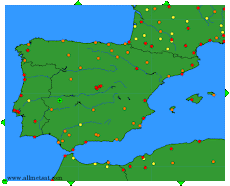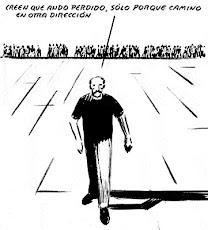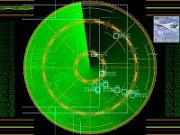viernes, 18 de noviembre de 2011
EMAS (ENGINEERED MATERIALS ARRESTING SYSTEM) EN EL AEROPUERTO DE MADRID-BARAJAS
El Sistema de Frenado de Emergencia o EMAS (Engineered Materials Arresting System), en su acrónimo en inglés, consiste es un sistema para frenar aquellos aviones que sobrepasan el extremo de la pista sin que sufran daños estructurales. Está situado como prolongación de la pista y tiene la misma anchura de ésta. Está formado por bloques de hormigón granular de deformación progresiva que se aplasta bajo el peso del avión que sobrepase el umbral de la pista, absorbiendo la energía del avión en movimiento.No obstante, es suficientemente rígida para que los vehículos de emergencia puedan conducir sobre ella sin sufrir ningún tipo de deformaciones. La resistencia proporcionada por el material deformado por el aplastamiento decelera el avión y lo detiene dentro de los límites del área de seguridad de extremo de pista.
Este sistema supone una mejora de la seguridad operacional en caso de salida por final de pista y fue instalado en la RESA (Runway End Safety Area) de las pistas 33L y 33R, concretamente a 3.318 m del umbral 33L y a 3.300 m del umbral 33R respectivamente, en el año 2008.
Es un sistema de un solo uso y una vez lo haya sido utilizado debe ser restituido para garantizar las especificaciones de frenado.
Ésta es la información que ofrece el AIP del Aeropuerto de Madrid-Barajas sobre el EMAS.
Dado que no hay ninguna norma que establezca estándares internacionales, proporcionamos el documento publicado por la FAA (Federal Aviation Administration) sobre el EMAS. El documento en pdf está disponible en la web de la FAA.
En SKYbrary hay disponible información detallada sobre el Sistema de Frenado de Emergencia o EMAS (Engineered Materials Arresting System).
Engineered Materials Arresting System
Source: www.skybrary.aero
Definition
An Engineered Materials Arresting System uses a specially installed surface which quickly stops any aircraft that moves on it and is installed at the end of runways to reduce the extent, and associated risks, of any overrun off the end of a runway compared to the equivalent soft ground distance.
The ICAO Position
There are currently no ICAO SARPs for EMAS.
In the absence of any international standards, early attempts at installing arrester beds of gravel at the end of runways proved to create a fire hazard comparable to that of an extended overrun. This was because the hard material thrown up from the gravel bed tended to puncture wing fuel tanks and start a fire, which was then very difficult to extinguish because leaking fuel seeped into the gravel bed from where it continued to feed the fire from below.
The Development of EMAS in the USA
SAS Flight 901 overrun on landing at KJFK, 28 Feb 84
It was an overrun by an SAS DC10-30 following a late touchdown on runway 04R at New York JFK in February 1984 which was the catalyst for the development of EMAS. The extent of the overrun led to both passenger injuries and substantial aircraft damage. The FAA and the United States Air Force (USAF) agreed to determine the feasibility of, and develop criteria for, the design of soft-ground arresting systems on 21 December 1984 and, in 1989, the FAA initiated an experimental program with the U.S. Naval Air Engineering Center to conduct experiments on soft-ground materials. The purpose of these experiments was to verify the theoretical calculations of stopping distances. Tests were conducted on phenolic foam and cellular cement with an FAA Boeing 727 in the summer of 1990. The FAA Technical Center then conducted two successful full-scale ‘arrestments’ using the same instrumented Boeing 727 in the summer of 1993 using a phenolic foam bed 207 metres long, 15 metres wide and 18 inches deep. The most significant early overall review of the subject was the 1993 FAA Report “Soft Ground Arresting Systems for Airports.”
Between 1994 and1996, the FAA and the Operator of New York JFK developed and installed a prototype arrestor bed built with pre-cast cellular cement blocks for runway 04R at KJFK. As early as 1998, the FAA issued the first generic specification for EMAS design, installation and maintenance. Since then it has encouraged the only current (US) manufacturer of a viable EMAS system, Zodiac Aerospace, in the development of its “EMASMAX” ® product for more widespread civil use.
An EMAS installed in accordance with the FAA specification is stated to provide a level of safety that is equivalent to an FAA 305m Runway Safety Area (RSA) - which corresponds to the ICAO Recommended Practice for RESA plus the required Runway Strip detailed in Annex 14. The total extent of the overrun ‘system’ which incorporates an EMAS bed can then be reduced subject to FAA approval to 180m - exactly the same distance as the ICAO RESA Standard provides for - but to considerably more effect .
The current FAA Circular on the subject is AC 150/5220-22A "Engineered Materials Arresting Systems (EMAS) for Aircraft Overruns" which was issued in September 2005 and includes requirements for:
- design using a verified system performance model
- use of fire resistant and non toxic materials
- system suitability for all ambient temperatures and other weather variables
- resistance to jet blast hazard
- no adverse effects in the event of a landing undershoot in the direction opposite to intended use
- no impediment to transit by RFFS vehicles
- any bed elevated above the surrounding surface must have access to or egress from it by vehicles or persons facilitated by provision of ramped or stepped edges
- an approved maintenance programme.
The requirements in respect of both jet blast and undershoot are largely met by the requirement for a “setback” zone between the runway end and the EMAS bed. The limiting factor is usually the jet blast risk, but continued development of pavement surfaces which are resistant to jet blast has allowed the EMAS set back distances to be reduced, in some cases to as little as 7.5m.
EMAS outside the USA
A number of NAAs have recently introduced, or are actively preparing, generic guidance for the approval of EMAS based on the currently applicable FAA standards. These NAAs include those in Australia, the UK, Canada, France and Spain. The definition of the term ‘Engineered Materials’ adopted by the FAA - ‘high energy absorbing materials of selected strength which will reliably and predictably crush under the weight of an aircraft’- has been widely accepted outside the USA.
EMAS Installations
The core application of EMAS has been seen as locations where the ground profile at the end of a runway is such that the consequences of a landing overrun, or one following a rejected take off initiated from high speed, are serious damage to, or the complete destruction, of an aircraft. More recently, it has been promoted as an option to avoid an overrun trajectory conflicting with the extended centreline of another runway. It has also been argued that it is not only an alternative to a longer RESA, where the criteria for the profile of the latter cannot be met, but is also an alternative which will ensure that high speed overruns will be stopped even where the full recommended RESA length may not be sufficient for an aircraft to stop within it.
Since the first EMAS were installed on runways 04R and 22L at New York JFK in 1996, there has been a steady increase in installations so that by June 2011, systems had been installed at 52 runway ends at 36 airports in the USA including Boston 15R and 04L, Chicago O’Hare 04R/22L and all four runways at Chicago Midway. The first installations outside the US were carried out on 33L and 33R at Madrid Barajas (Spain), on both ends of 02/20 at Juizhai-Huanglong (China) and on 10 at Taipei Songshan (Taiwan).
The presence of an EMAS should be included in the AIP entry for the Airport concerned and the main commercial chart providers have now developed a standard depiction for an EMAS installation.
Airports equipped with EMAS
Airports which have one or more runways equipped with EMAS include: KBOS (Boston/Logan International), KBTR (Baton Rouge Metropolitan), KBUR (Burbank), KCLT (Charlotte/Douglas), KCRW (Charleston/Yeager), KEWR (Newark), KFLL (Fort Lauderdale Hollywood International Airport), KGSP (Greenville/Spartanburg), KJFK (New York/John F. Kennedy), KLGA (LaGuardia Airport), KLIT (Little Rock National Airport/Adams Field), KMDW (Chicago/Midway), KMSP (Minneapolis-Saint Paul), KORD (Chicago/O'Hare), KSAN (San Diego), KTEB (Teterboro), LEMD (Madrid/Barajas), ZUJZ (Jiuzhai/Huanglong)
EMAS Design
The design of the Zodiac Aerospace EMAS product is predicated on being able to cope with the overrun speeds that have occurred in the past and the aircraft sizes which may use particular runways. Each installation is adapted to the prevailing environmental circumstances and a maximum EMAS entry speed by aircraft type. It meets all the requirements of the applicable FAA guidance.
The Zodiac EMAS is a bed of cellular cement blocks encased in a protective cover positioned after a ‘setback distance’ which begins immediately after the end of the paved runway surface. The blocks crush reliably and predictably under the weight of an aircraft and thus facilitate a rapid but nevertheless gentle and consistent deceleration. Each lightweight block is secured to the EMAS base with hot asphalt and the seams between blocks are then taped at their upper surface to prevent water penetration. The depth of the EMAS bed gradually increases with increasing distance from the runway, typically from around 25cm up to 75cm.
An FAA-approved computer model of the wheel / compacted cellular cement interface is used to determine the required arrestor bed configuration according to aircraft weight and EMAS entry speed. The heaviest aircraft will usually be the ‘critical aircraft’ but, since landing gear configuration and tyre pressures are also relevant, this does not hold universally.
Each system is also designed to take account of runway length / width, elevation, and the length and slope of the available installation area. Performance usually takes account of aircraft types which have more than 500 movements per year and assumes that these aircraft will be operating at 100% of runway MTOM or 80% of runway MLW. Most installations to date have used a maximum 70 knots bed-entry speed.
Additional assumptions for all designs are that:
- an aircraft is still attempting to stop as the runway is exited
- reverse thrust / reverse pitch is not being used as the runway is exited
- the surface area leading to the EMAS bed has poor braking characteristics
- there is minimal or no structural damage to the landing gear
- there is no aircraft braking or use of reverse thrust / reverse pitch once an aircraft enters the EMAS
An EMAS bed may have a surface slope downwards and may have changes in that slope within the bed so that the quantity of any landfill used to create an adequate base level for the bed can be minimised. It can also accommodate projecting frangible lighting which needs to be sited within the bed area.
To date, EMAS installations have been designed to arrest multi crew transport aircraft and these systems do not work as effectively for smaller ones - those under 5700kg MTOM
EMAS Maintenance and Repair
The standard design life of a Zodiac Aerospace EMAS is 20 years. Routine inspection and maintenance is important but requirements are minimal. Restoration of a bed after overrun use may take a few days and cannot be completed in sub zero temperatures.
EMAS Use for Flight Crew
The only pilot guidance for an imminent EMAS encounter is to maintain the extended runway centreline and, once stopped, make no attempt to taxi or otherwise move the aircraft. Once the upper surface of an EMAS bed has been breached, loose material from the blocks will crush underfoot, so that access on foot to and egress from an aircraft in the bed is not impeded.
EMAS in action
A number of overruns in the USA have had less serious consequences than might have been the case due to the presence of an EMAS. Runway 04R at JFK has seen three EMAS-mitigated overruns in which the aircraft have been undamaged and the occupants uninjured including:
- A very late and fast flapless day landing at New York JFK by a Saab 340B in 1999.
- A deep landing at night at New York JFK by a Boeing MD-11F in 2003
Other successful EMAS-mitigated overruns in the US have included:
- A high speed Rejected Take Off (RTO) at Charleston WV by a Bombardier CRJ in 2010
- A deep landing at Teterboro NJ by a Gulfstream IV in 2010.
Related articles and Further Reading sections were not included but are available in the SKYbrary article.
Como indicamos al principio, en el Aeropuerto de Madrid-Barajas está instalado en la RESA (Runway End Safety Area) de las pistas 33L y 33R. En el Plan Barajas, con buen criterio se recomendó su instalación en las, entonces nuevas, pistas 15L y 36R. AENA explicar el cambio de criterio a la hora de elegir las pistas.
No obstante, se realizan las siguientes precisiones o advertencias:
En cualquier caso, debe resaltarse que los sistemas EMAS no pretenden sustituir a las zonas libres de obstáculos dictadas por los distintos organismos y no afectan a sus dimensiones oficiales, aunque está claro que disminuyen el riesgo de accidente en las extensiones recomendadas de dichas áreas.
… que se sitúen las nuevas pistas (15L y 36R) de modo que la prolongación del eje de cualquiera de ellas no corte al eje de la otra, produciéndose un incremento del riesgo de accidente con colisión por aterrizaje largo.
Ya recomendamos varias veces a los pilotos, y no por ello dejaremos de hacerlo las veces que sea necesario, que lean y relean estos párrafos y que sean conscientes y consecuentes con la responsabilidad que tienen cada vez que despegan o toman tierra en el Aeropuerto de Madrid-Barajas.
¿Qué pasaría en el Aeropuerto de Madrid-Barajas si un avión se saliera de la pista tras aterrizar?
Esta situación se explica en detalle en la página Riesgo 6: Los aterrizajes largos de las pistas 33R y 33L en configuración Norte y 18R y 18L en configuración Sur, tienen riesgo de colisión con las aeronaves estacionadas que aguardan haciendo cola para el despegue por las pistas 36R y 36L en configuración Norte y la 15R y 15L en configuración Sur.
Y los artículos sobre dos accidentes de aviones que se salieron de la pista, uno en Magalore (India) y otro en Toronto (Canadá).
Suscribirse a:
Enviar comentarios (Atom)


























3 comentarios:
Que no se engañe nadie.
AENA instala en Barajas el sistema EMAS ideado por la FAA, y siguiendo la Circular Aérea, AC 150/5220-22A "Engineered Materials Arresting Systems (EMAS) que es la que lo desarrolla, sabiendo perfectísimamente que dicho sistiema en Barajas no sirve absolutamente para nada, es decir, en absoluto el sistema EMAS disminuye en lo más mínimo el riesgo más que evidente no de un accidente como consecuencia de un "aterrizaje largo", como es más que evidente que si que lo disminuye en cualquier otro aeropuerto civil o militar del mundo mundia en el que se instale, sino el evidente riesgo que en este preciso momento existe en Barajas de multiples accidentes por colisiones en cadena si en este preciso momento se produjera un "aterrizaje largo" en cualquiera de sus 4 "pseudopistas" no solo porque es más que evidente que mientras en lugar de pistas se utilicen "pseudopista esa catástrofe sin precedentes en cualquier momento tarde o temprano se producirá por muchos EMAS que se instalen, sino que está fehacientemente demostrado en la Solicitud que AENA le hace a la FAA a traves de INECO no solo de la Circular Aérea -AC 150/5220-22A "Engineered Materials Arresting Systems (EMAS), sino de la Circular Aérea AC 150/5300-13, que la FAA le remitió el 24 de marzó de 1999 y del que literalmente le copio lo siguiente:
"FROM: MS. ANGELES SERRA, FAA/CAAG, SPAIN
TO: SR. DON FRANCISCO GOMEZ, INECO
SR. DON MIGUEL DE BERNARDO
Con referencia a su solicitud de información relativa a la extensión de la OFA, adjunto remito la respuesta que me ha sido enviada por la FAA en Washington.
La respuesta a la segunda segunda pregunta formulada por Usted, referente a sistemas para frenado de aeronaves, será remitida a la mayor brevedad posible.´
Fdo.- Angela Serra"
¿Como puede AENA haber instalado el sistema EMAS en Barajas, máxime siendo como es su Presidente ingeniero aeronáutico, cuando el sabe perfectísimamente y todo el mundo que quiera puede comprobarlo, que de manera algo más que terrorífica, y como por otra parte no puede ser de otra manera al utilizarse "pseudopistas" en lugar de pistas, nada, pero que absolutamente nada, de lo que expresa la norma de la FAA en la AC 150/5300-13 relacionada con la función OFA, RPZ y OFA EXTENDED se cumple en Barajas desde su ampliación, aunque en el BOE de 16/12/1999 y en el Informe de la ex Ministra de Fomento de 4/7/2005, se afirme, evidentemente de manera algo más que terrorifica TODO LO CONTRARIO?
Luis Guil
Querìa darte la enhorabuena por tu blog, ya era hora de que alguièn hablase con claridad sobre las carencias y los peligros de grandes infraestructuras utilizadas por todos. Gracias por llamar a las cosas por su nombre.
Estimado amigo,
le agradecemos sus palabras de apoyo y reconocimiento.
Un cordial saludo.
El equipo de Las mentiras de Barajas.
Publicar un comentario